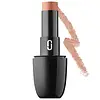Marc Jacobs Beauty Accomplice Concealer & Touch-Up Stick Versus NYX Cosmetics Pro Fix Stick Correcting Concealers
What's inside
What's inside
 Key Ingredients
Key Ingredients

 Benefits
Benefits

 Concerns
Concerns

 Ingredients Side-by-side
Ingredients Side-by-side

Hydrogenated Polydecene
EmollientSilica
AbrasiveDiphenylsiloxy Phenyl Trimethicone
Skin ConditioningOctyldodecanol
EmollientCyclopentasiloxane
EmollientPolyethylene
AbrasiveDipentaerythrityl Hexahydroxystearate/Hexastearate/Hexarosinate
Skin ConditioningHydrogenated Polyisobutene
EmollientCopernicia Cerifera Cera
EmollientParaffin
PerfumingAcrylates/Dimethicone Copolymer
Skin ConditioningTriethoxycaprylylsilane
Phytosteryl Isostearyl Dimer Dilinoleate
EmollientCera Microcristallina
Emulsion StabilisingSorbitan Sesquioleate
EmulsifyingMica
Cosmetic ColorantGlycerin
HumectantDipropylene Glycol
HumectantWater
Skin Conditioning1,2-Hexanediol
Skin ConditioningIsopropyl Palmitate
EmollientTocopheryl Acetate
AntioxidantQuaternium-18 Bentonite
Caprylyl Glycol
EmollientDimethicone
EmollientPolyglyceryl-10 Oleate
Skin ConditioningHydrogenated Lecithin
EmulsifyingPropylene Carbonate
SolventEthylhexylglycerin
Skin ConditioningAdenosine
Skin ConditioningQuartz
AbrasiveButylene Glycol
HumectantTremella Fuciformis Polysaccharide
Emulsion StabilisingGlobularia Alypum Leaf Extract
Skin ConditioningEthyl Hexanediol
SolventTocopherol
AntioxidantBHT
AntioxidantTitanium Dioxide
Cosmetic ColorantIron Oxides
CI 77742
Cosmetic ColorantHydrogenated Polydecene, Silica, Diphenylsiloxy Phenyl Trimethicone, Octyldodecanol, Cyclopentasiloxane, Polyethylene, Dipentaerythrityl Hexahydroxystearate/Hexastearate/Hexarosinate, Hydrogenated Polyisobutene, Copernicia Cerifera Cera, Paraffin, Acrylates/Dimethicone Copolymer, Triethoxycaprylylsilane, Phytosteryl Isostearyl Dimer Dilinoleate, Cera Microcristallina, Sorbitan Sesquioleate, Mica, Glycerin, Dipropylene Glycol, Water, 1,2-Hexanediol, Isopropyl Palmitate, Tocopheryl Acetate, Quaternium-18 Bentonite, Caprylyl Glycol, Dimethicone, Polyglyceryl-10 Oleate, Hydrogenated Lecithin, Propylene Carbonate, Ethylhexylglycerin, Adenosine, Quartz, Butylene Glycol, Tremella Fuciformis Polysaccharide, Globularia Alypum Leaf Extract, Ethyl Hexanediol, Tocopherol, BHT, Titanium Dioxide, Iron Oxides, CI 77742
Isodecyl Neopentanoate
EmollientPropylene Glycol Dicaprylate/Dicaprate
EmollientSynthetic Wax
AbrasiveIsononyl Isononanoate
EmollientOctyldodecanol
EmollientParaffin
PerfumingCaprylic/Capric Triglyceride
MaskingSilica
AbrasiveDimethicone
EmollientPolyglyceryl-3 Diisostearate
EmulsifyingCera Microcristallina
Emulsion StabilisingLimnanthes Alba Seed Oil
Skin ConditioningStearalkonium Hectorite
Gel FormingDimethicone/Vinyl Dimethicone Crosspolymer
Skin ConditioningLecithin
EmollientAluminum Hydroxide
EmollientIsopropyl Myristate
EmollientPropylene Carbonate
SolventIsostearic Acid
CleansingEthylhexyl Palmitate
EmollientPolyglyceryl-3 Polyricinoleate
EmulsifyingPolyhydroxystearic Acid
EmulsifyingPhenoxyethanol
PreservativeIsodecyl Neopentanoate, Propylene Glycol Dicaprylate/Dicaprate, Synthetic Wax, Isononyl Isononanoate, Octyldodecanol, Paraffin, Caprylic/Capric Triglyceride, Silica, Dimethicone, Polyglyceryl-3 Diisostearate, Cera Microcristallina, Limnanthes Alba Seed Oil, Stearalkonium Hectorite, Dimethicone/Vinyl Dimethicone Crosspolymer, Lecithin, Aluminum Hydroxide, Isopropyl Myristate, Propylene Carbonate, Isostearic Acid, Ethylhexyl Palmitate, Polyglyceryl-3 Polyricinoleate, Polyhydroxystearic Acid, Phenoxyethanol
 Reviews
Reviews

Ingredients Explained
These ingredients are found in both products.
Ingredients higher up in an ingredient list are typically present in a larger amount.
Cera Microcristallina isn't fungal acne safe.
Dimethicone is a type of synthetic silicone created from natural materials such as quartz.
What it does:
Dimethicone comes in different viscosities:
Depending on the viscosity, dimethicone has different properties.
Ingredients lists don't always show which type is used, so we recommend reaching out to the brand if you have questions about the viscosity.
This ingredient is unlikely to cause irritation because it does not get absorbed into skin. However, people with silicone allergies should be careful about using this ingredient.
Note: Dimethicone may contribute to pilling. This is because it is not oil or water soluble, so pilling may occur when layered with products. When mixed with heavy oils in a formula, the outcome is also quite greasy.
Learn more about DimethiconeOctyldodecanol is a fatty alcohol. It is primarily used to enhance the texture of products.
As an emulsifier, Octyldodecanol helps prevent the oils and waters from separating. It also prevents ingredients from creating foam when shaken.
Octyldodecanol is created by reducing fatty acid to an alcohol.
Due to its high molecular weight, it does not get absorbed into the skin.
Learn more about OctyldodecanolParaffin is a solid created from petroleum. The term 'paraffin' can also refer to either
petroleum jelly or mineral oil.
It has natural occlusive properties which can worsen oily skin. Due to its petrolatum base, this ingredient is not fungal-acne safe.
This ingredient is a solvent. It helps dissolve active ingredients and alter the texture of products.
Propylene Carbonate is commonly used in makeup and with clay, such as montmorillonite or bentonite.
Studies show this ingredient to be safe for cosmetics. When it is undiluted, it can cause skin irritation. (It is always diluted in skincare and makeup). This ingredient is water-soluble.
Propylene Carbonate is created from propylene glycol and carbonic acid.
Learn more about Propylene CarbonateSilica, also known as silicon dioxide, is a naturally occurring mineral. It is used as a fine, spherical, and porous powder in cosmetics.
Though it has exfoliant properties, the function of silica varies depending on the product.
The unique structure of silica enhances the spreadability and adds smoothness, making it a great texture enhancer.
It is also used as an active carrier, emulsifier, and mattifier due to its ability to absorb excess oil.
In some products, tiny microneedles called spicules are made from silica or hydrolyzed sponge. When you rub them in, they lightly polish away dead skin layers and enhance the penetration of active ingredients.
Learn more about Silica